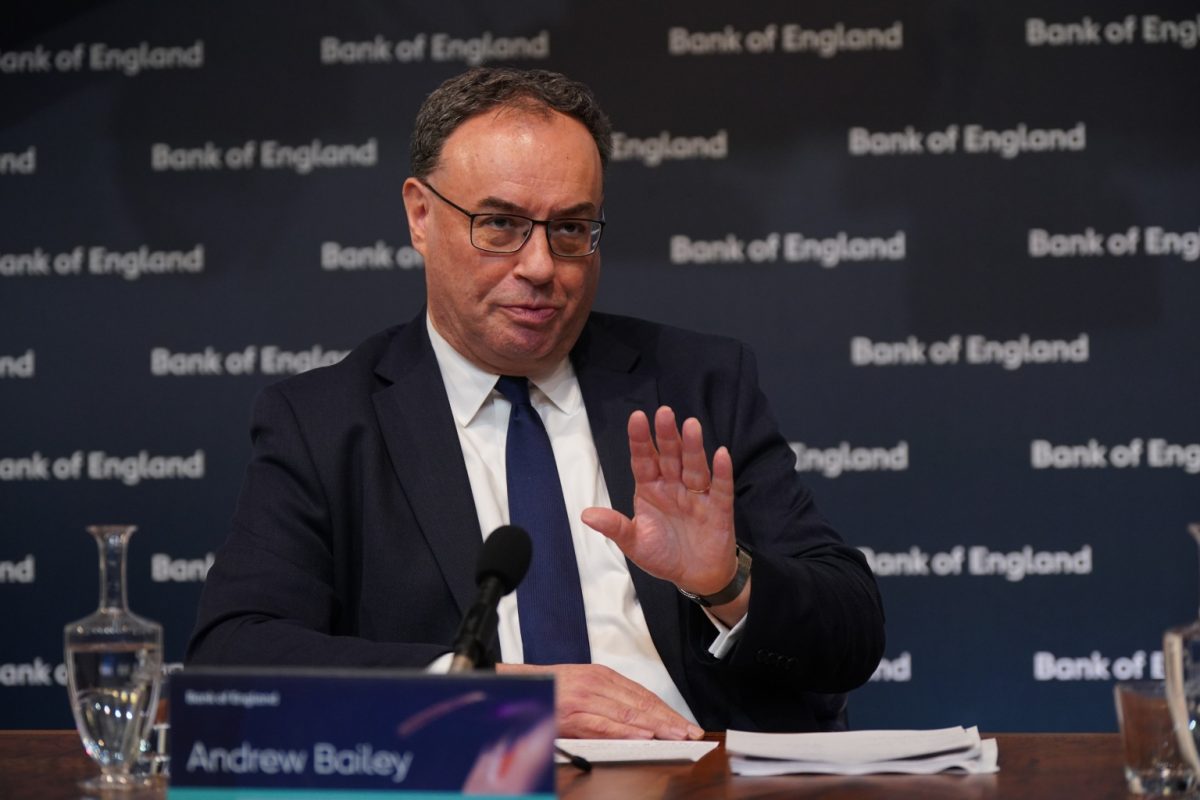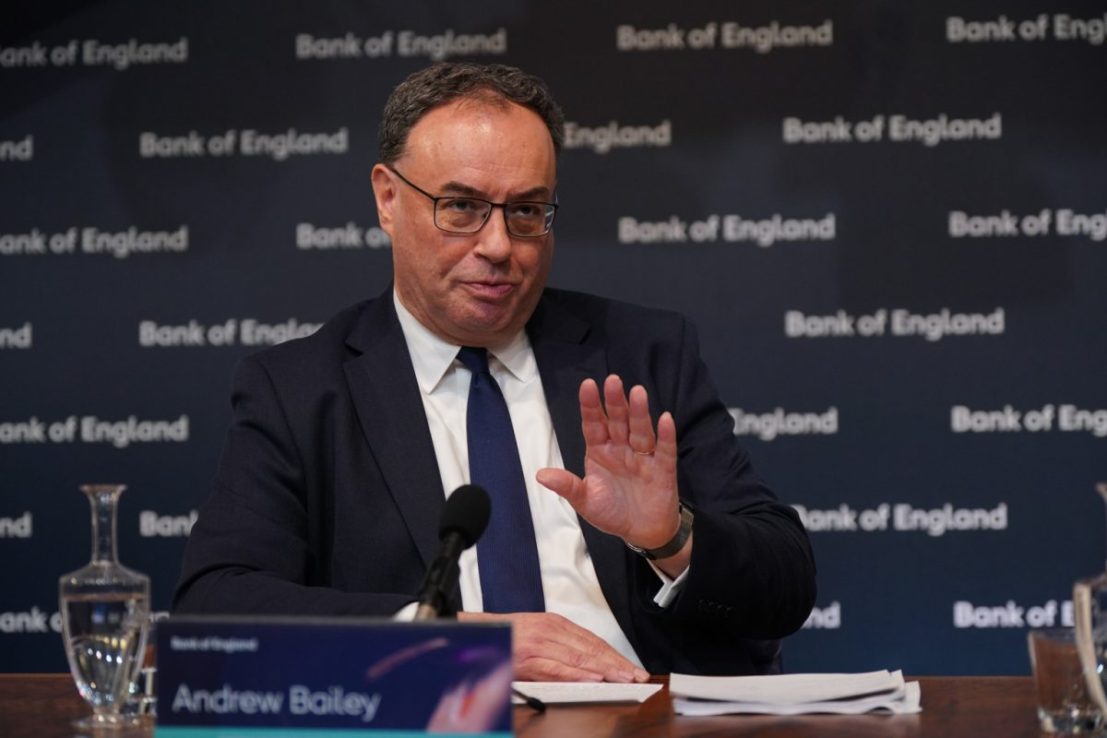Why the Bank of England might be wary of cutting interest rates before the Fed
The path for the Bank of England to cut interest rate cuts looks increasingly uncertain, particularly as the US Federal Reserve looks set to wait a while longer before loosening policy.


The path for the Bank of England to cut interest rates looks increasingly uncertain, particularly as the US Federal Reserve looks set to wait a while longer before loosening policy.
Inflation continued falling in March, but came in ahead of expectations at 3.2 per cent. Annual wage growth also exceeded economists’ predictions, pointing to continuing cost pressure for firms.
Combine this with an improving growth outlook, and the case for rate cuts seems much less strong than even a few months ago.
Ian Stewart, chief economist at Deloitte said: “A much-diminishing risk of an economic hard landing has weakened the case for big rate cuts. It’s quite possible now that quarterly growth in the UK this year could be close to, or even above, trend rates.”
Reflecting this, markets have dialled back their expectations for major rate cuts. Just two rate cuts are fully priced in for this year, down from as many as six at the beginning.
Even so, price increases in the UK are now below US levels for the first time since March 2022. The domestic economy is much weaker than the US, so there’s likely some scope to cut rates without reigniting inflation.
Speaking in Washington yesterday, Andrew Bailey, governor of the Bank, sounded relatively relaxed. Inflation was “pretty much on track” even after the slight upside surprise in March’s figures, he said.
“I expect that next month number will show quite a strong drop because we have a particularly unique energy to household energy pricing system in the UK,” he said.
Bailey pointed out that inflation dynamics in the UK were different to the US. “There is more demand led inflation in the US, while we’re seeing the unwind of supply shocks still going on,” he said.
Given this it still seems likely that, by August, the Bank of England will be in a position to cut interest rates.
The same cannot be said for the Fed. US inflation has come in ahead of expectations for three months in a row while data from the jobs market suggests the world’s largest economy continues to hum along.
In a striking contrast to Bailey’s optimism, Jerome Powell sounded hawkish this week. “The recent data has clearly not given us greater confidence and instead indicates that is likely to take longer than expected to achieve that confidence,” he said on Tuesday.
All of this raises the question will the Bank of England be willing to cut rates before the Fed.
Many economists point out that starting the cutting cycle earlier would risk putting pressure on sterling, which in turn would put up costs for many firms importing from abroad.
Sterling has already weakened in anticipation of the Bank cutting rates before the Fed. It is currently trading around $1.245, down from near $1.29 in early March.
Stewart suggested that “sterling weakness” would make the Bank “wary of getting too far ahead of the Fed”.
In the short term, this is unlikely to be a major factor for the Bank, with the Monetary Policy Committee (MPC) more likely to concentrate on inflation and the labour market.
“Any decision will be based on the outlook for the UK economy where we have flattish growth, falling inflation, and fiscal constraints,” Dean Turner, UK economist at UBS said.
However, the Fed’s decisions will influence how far and fast the Bank is able to cut rates.
“If the Fed refrain from easing, or do so very slowly, then policy makers here may decide they have to moderate the pace of cuts through the end of the year and into next year,” Turner said.
Sanjay Raja, chief UK economist at Deutsche Bank, pointed out that “spillovers via stronger global trade and a weaker currency” could slow the pace of rate cuts.
The Bank won’t feel bound by the Fed this summer, but if the Fed holds on for a little longer then the MPC might start to feel the pressure.



